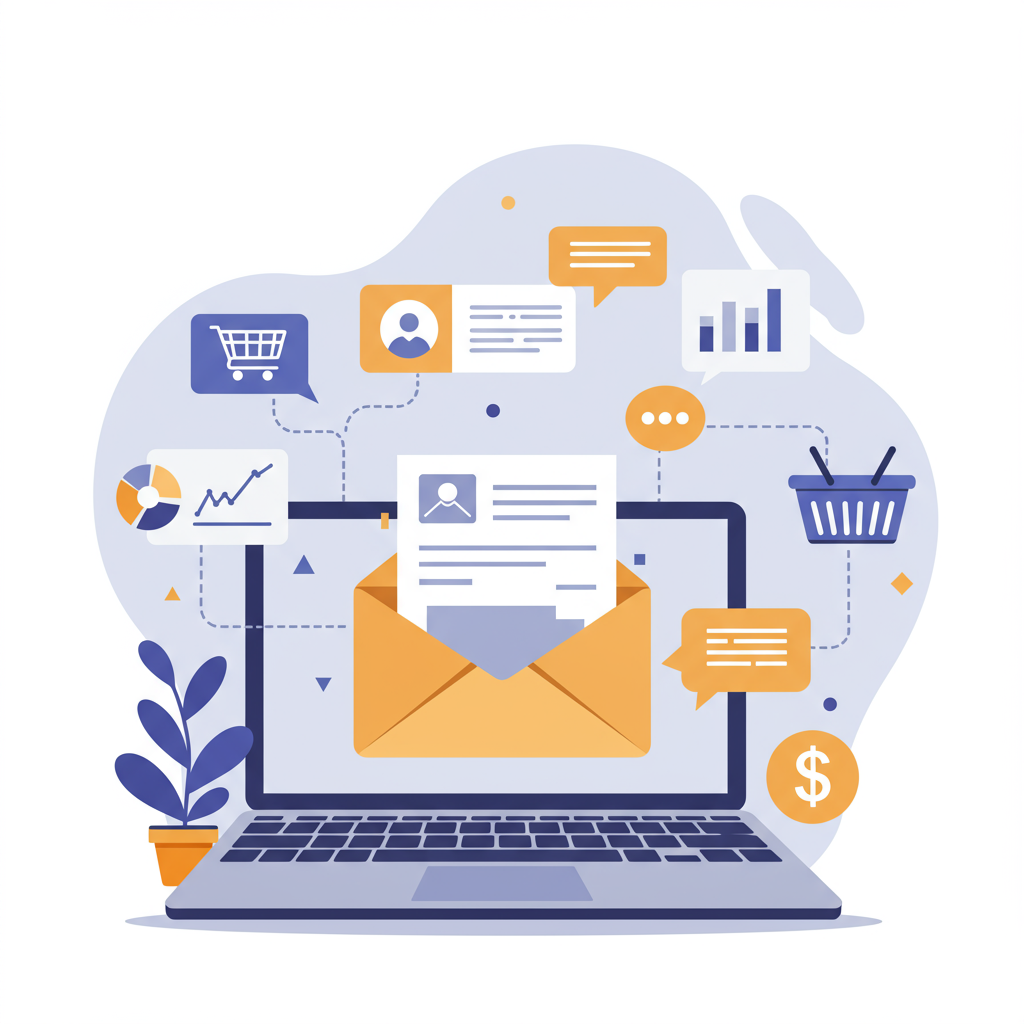Mastering the art of email to build customer loyalty and drive sales for your e-commerce store.
Hello fellow merchants! As we rapidly approach 2025, the digital landscape continues its relentless evolution. New platforms emerge, algorithms shift, and customer expectations grow ever higher. Amidst this dynamic environment, one channel consistently proves its enduring power and delivers the highest return on investment: email marketing.
From my own experience running and consulting for numerous Shopify stores, I’ve witnessed firsthand how a well-executed email strategy can transform a business. It’s not just about sending promotional blasts; it’s about building genuine relationships, nurturing leads, and driving predictable, sustainable revenue.
For 2025, our focus must shift from merely sending emails to crafting highly personalized, value-driven communications that resonate deeply with our audience. This isn’t just a ‘nice-to-have’ anymore; it’s a fundamental pillar of e-commerce success.
The absolute cornerstone of any successful email marketing strategy is your list. It’s your owned audience, a direct line to your customers that isn’t subject to the whims of social media algorithms or ad platform policies. In 2025, we’re prioritizing quality over sheer volume.
A smaller, highly engaged list is infinitely more valuable than a massive, unresponsive one. To build this quality list, implement strategic opt-in forms across your Shopify store. Think beyond basic pop-ups; consider exit-intent pop-ups, embedded forms on product pages, and dedicated landing pages.
Always offer a compelling incentive for signing up. While a discount is effective, consider lead magnets like exclusive guides, checklists, early access to new collections, or even a free gift with their first purchase. These attract truly interested subscribers who are more likely to convert.
Once you have subscribers, the next critical step is segmentation. This isn’t optional; it’s fundamental for relevance. Sending generic emails to your entire list is a surefire way to see low engagement and high unsubscribe rates.
Start with basic segments like new subscribers, repeat customers, and high-value customers. But don’t stop there. Dive deeper: segment by purchase history (specific products bought, categories browsed), engagement level (opened X emails, clicked Y links), and even geographic location if relevant.
With robust segmentation mastered, personalization becomes incredibly powerful. It’s about making each email feel like it was written just for them. Go beyond just using their first name.
Leverage dynamic content blocks to display personalized product recommendations based on their browsing history, past purchases, or items they’ve added to their cart. Reference their recent activity, celebrate their loyalty milestones, or suggest complementary products.
Automated email flows are the workhorses of your email marketing strategy. They run 24/7, nurturing leads, recovering sales, and building loyalty without requiring constant manual intervention. If you’re not using them, you’re leaving money on the table.
A robust welcome series (typically 3-5 emails) is crucial for new subscribers. Introduce your brand, share your unique story, highlight your bestsellers, and reiterate any first-purchase incentives. This sets the tone for your relationship.
The abandoned cart flow is a non-negotiable revenue generator. Send a reminder within an hour of abandonment, a follow-up with a sense of urgency, and perhaps a small incentive (like free shipping) if they still haven’t converted.
Don’t forget post-purchase emails. These include thank you notes, order confirmations, shipping updates, cross-sell/upsell opportunities for related products, and crucial review requests. These build trust and encourage repeat business.
Set up re-engagement flows for inactive subscribers. Try to win them back with exclusive offers or a ‘we miss you’ message before considering removing them from your list to maintain list hygiene.
What you send matters just as much as when and to whom. Balance promotional emails with valuable content. Your subscribers signed up for more than just sales pitches.
Share behind-the-scenes glimpses of your brand, customer spotlights, educational content related to your products, or lifestyle tips that align with your brand’s values. This builds community and positions you as an authority.
Never stop testing. A/B test everything: subject lines, call-to-actions, email layouts, send times, and even different offers. Small tweaks can lead to significant improvements over time.
Regularly review your key performance indicators (KPIs): open rates, click-through rates, conversion rates, and unsubscribe rates. Understand what’s working and what isn’t, and use these insights to refine your strategy.
Always ensure compliance with data privacy regulations like GDPR, CCPA, and CAN-SPAM. Use double opt-in for new subscribers, provide clear and easy-to-find unsubscribe options, and have a transparent privacy policy.
Look towards the future. AI-powered content generation and predictive analytics for hyper-personalization are becoming more accessible. Interactive email elements like quizzes, polls, and embedded videos are also on the horizon, boosting engagement.
While Shopify’s native email tools are continually improving, consider robust email marketing apps like Klaviyo, Omnisend, or Mailchimp for advanced automation, segmentation capabilities, and deeper analytics. These tools can truly unlock your email marketing potential.
My advice for 2025 is to invest time in understanding your customer journey intimately. Map out email flows that genuinely serve their needs at each stage, from initial interest to post-purchase loyalty.
Remember, email marketing is not a set-it-and-forget-it strategy. It requires continuous optimization, creativity, and a deep understanding of your audience. But the rewards, in terms of customer loyalty and increased sales, are immense.
What are your biggest email marketing challenges or successes you’ve experienced with your Shopify store? I’d love to hear your thoughts on this article!
Embrace these strategies, and you’ll be well on your way to making 2025 your most successful year yet for your Shopify store. Your customers are waiting to hear from you, personally and powerfully.






